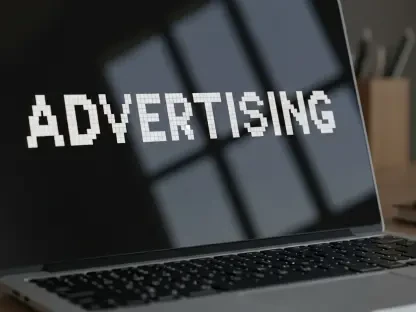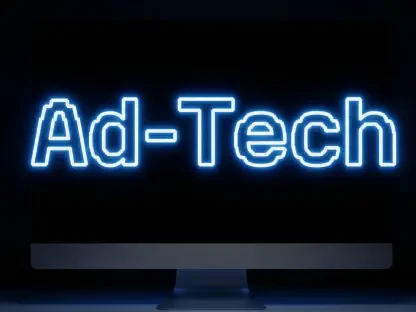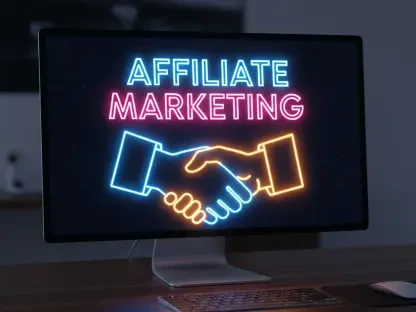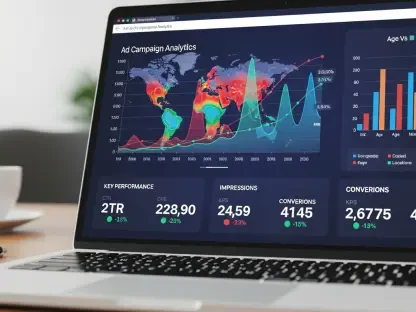Imagine a world where video advertisements, which dominate over 82% of internet traffic, no longer dictate the pace of your online experience, and every day, millions of users face the frustration of unskippable ads interrupting their streaming sessions or casual browsing. Opera Software has stepped into this arena with a bold experimental tool—Video Skip—integrated into its browser lineup, including Opera One, Opera GX, and Opera Air. Announced on September 16, this feature empowers users to manually bypass video ads with a simple click, promising a shift in how digital content is consumed. This review dives deep into the mechanics, implications, and potential of this innovation, assessing whether it truly redefines user control in an ad-heavy digital landscape.
Understanding the Core of Video Skip
Video Skip emerges as a direct response to the growing annoyance of intrusive video advertisements that clutter online spaces. Unlike traditional ad blockers that prevent ads from loading altogether, this feature allows ads to start before offering users the option to skip them instantly by clicking a button that appears on hover over video players. Its significance lies in addressing a critical pain point—user autonomy—while navigating the delicate balance between personal choice and the revenue needs of content creators.
This tool is not just a gimmick but a reflection of Opera’s broader mission to prioritize user experience in an era where video content reigns supreme. By embedding this capability across its platforms, Opera positions itself as a pioneer in offering nuanced control mechanisms. The manual nature of the skip function sets it apart, ensuring users actively decide when to bypass ads rather than relying on automated solutions that might disrupt website functionality.
Technical Breakdown and Functionality
Manual Skipping Mechanism
At the heart of Video Skip is its manual activation system, designed to integrate seamlessly with the browsing interface. When a video ad plays, a discreet button appears on hover at the top of the player, alongside familiar tools like Lucid Mode for enhanced visuals and Video Popout for multitasking. Clicking this button fast-forwards the ad to its conclusion, delivering immediate access to the desired content without the wait.
This approach is deliberate, allowing advertisements to initiate and register an impression before being skipped. Such a design suggests a compromise, aiming to mitigate the impact on advertisers who rely on initial views for revenue, while still catering to user impatience. It’s a thoughtful middle ground that differentiates Video Skip from more aggressive ad-blocking technologies.
Compatibility Across Opera Platforms
Video Skip is built into Opera’s diverse browser ecosystem, functioning smoothly on Opera One for general users, Opera GX for gamers, and Opera Air for lightweight browsing. Users can easily enable or disable the feature through browser settings, reflecting Opera’s emphasis on customization and flexibility. Its integration with existing functionalities ensures a cohesive experience without overwhelming the interface.
As an experimental tool, Opera has opened the door for user input to refine its performance. This feedback-driven approach highlights a commitment to adaptability, ensuring the feature evolves based on real-world usage. Compatibility across various video platforms remains a focus, though challenges in uniform application are acknowledged as part of its ongoing development.
Positioning in Browser Innovation Trends
The launch of Video Skip aligns with a broader industry shift toward enhancing user experience as a competitive edge in the browser market. Competitors like Brave have tackled ad intrusion with countermeasures against detection systems, while Microsoft Edge incorporates AI-driven tools like Copilot Mode for personalized browsing. Opera’s suite of updates, including a revamped History interface with intuitive categorization and dynamic themes like Obsidian, underscores this trend of usability over raw performance.
What sets Opera apart is its focus on granular control mechanisms that empower users without alienating content providers. Video Skip, as part of this strategy, reflects an understanding that modern browsing demands tools catering to individual preferences. This positions Opera as a contender in a landscape where differentiation hinges on how well a browser anticipates and addresses user needs.
In tandem with these innovations, the industry is witnessing a push for personalization through design and functionality. Opera’s efforts to blend aesthetic updates with practical tools mirror a market realization that users value both form and function. This holistic approach could redefine expectations for what browsers should offer in terms of control and engagement.
Impact on the Digital Advertising Ecosystem
Video Skip’s introduction raises critical questions about its ripple effects on digital advertising, an industry already grappling with user pushback against ads. By allowing manual bypassing of video content, the feature directly tackles widespread frustration, yet it also poses a threat to traditional revenue models that depend on ad exposure. Platforms like YouTube, with billions in annual ad earnings, illustrate the high stakes involved for publishers.
Unique use cases for Video Skip could influence how advertisers design future campaigns, potentially shifting focus to shorter, more engaging formats that capture attention before a skip occurs. Additionally, engagement metrics might evolve to prioritize quality interactions over mere view counts, as advertisers adapt to a landscape where user control is paramount. The feature’s impact could thus extend beyond immediate skipping to reshape ad creation strategies.
Meanwhile, the advertising sector is already pivoting toward alternatives like Connected TV, recognized as a rapidly growing channel in the U.S. market. Innovations such as duration-based reporting for video ads suggest an industry keen on refining measurement to reflect true user interest. Opera’s tool enters this dynamic space, potentially accelerating the need for premium ad formats that balance visibility with user tolerance.
Challenges Facing Video Skip Implementation
Despite its promise, Video Skip encounters several obstacles that could hinder its widespread adoption. Technical compatibility across the myriad of video platforms and players remains a significant hurdle, as inconsistent performance could frustrate users expecting seamless functionality. Ensuring the feature works uniformly without disrupting video playback or site operations is a complex task under scrutiny during its experimental phase.
Market and regulatory challenges also loom large, particularly with data protection laws in regions like Europe demanding stringent compliance. The risk of disrupting ad revenue streams could provoke pushback from publishers, necessitating careful navigation by Opera to avoid alienating key stakeholders. These economic tensions highlight the delicate balance between innovation and industry stability.
Opera’s cautious rollout, emphasizing user feedback, serves as a buffer against these issues. By treating Video Skip as a work in progress, the company mitigates potential backlash while refining the tool’s scope. However, the long-term viability of such features will depend on striking an equilibrium that satisfies both users seeking control and advertisers needing visibility.
Future Outlook for User Control Tools
Looking ahead, Video Skip could pave the way for more sophisticated user control mechanisms within browsers. Potential enhancements might include customizable skip thresholds or integration with ad preference settings, allowing users to tailor their experience further. Such refinements, driven by user input, could solidify Opera’s reputation as a leader in personalized browsing.
The broader implications for browser competition are notable, as tools like Video Skip might inspire rival platforms to develop similar or counteractive features. This could escalate the race for user-centric innovations, pushing the industry toward a future where control over digital content becomes a standard expectation rather than a novelty.
In the advertising realm, the rise of premium formats and stricter regulatory frameworks will likely shape how such tools evolve. As video content continues to dominate internet traffic, the interplay between user empowerment and monetization strategies will remain a central theme. Opera’s experiment with Video Skip could thus serve as a catalyst for rethinking how digital ecosystems accommodate competing interests.
Reflecting on the Journey and Next Steps
Looking back, the rollout of Opera’s Video Skip feature marked a pivotal moment in addressing the clash between user autonomy and digital advertising imperatives. Its manual skip mechanism offered a fresh perspective on balancing these forces, while its experimental nature underscored a prudent approach to innovation. The integration across Opera’s platforms demonstrated technical finesse, even as challenges in compatibility and industry response lingered.
Moving forward, the path for Video Skip and similar tools lies in iterative improvement based on real-world insights. Opera should prioritize expanding compatibility to cover diverse video environments, ensuring a consistent user experience. Engaging with advertisers to explore mutually beneficial ad formats could also alleviate revenue concerns, fostering a collaborative rather than confrontational dynamic.
Beyond immediate refinements, the industry must consider how to integrate user control into broader digital strategies. Developing standardized metrics for engagement in a skip-enabled world could provide clarity for advertisers, while browsers might explore partnerships with content creators to test innovative ad models. These steps, if pursued thoughtfully, could transform the initial spark of Video Skip into a lasting framework for harmonizing user needs with economic realities in the digital age.









